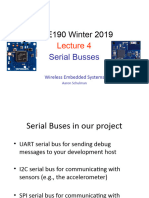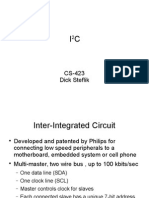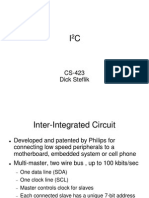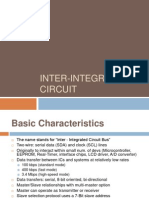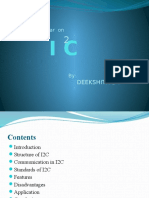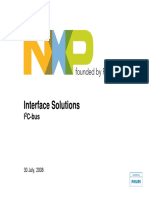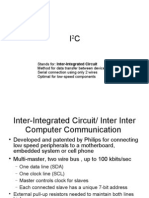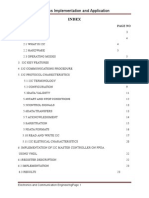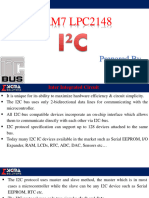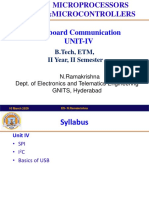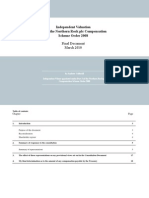0% found this document useful (0 votes)
75 views17 pagesIOT Lecture7-Serial-Spi-And-I2c
The document discusses SPI and I2C communication protocols used in wireless embedded systems. It outlines the advantages and disadvantages of each protocol, detailing how SPI allows fast point-to-point connections while I2C enables multiple devices to connect with only two wires. Key concepts such as clock modes, data transfer, and master-slave relationships are explained for both protocols.
Uploaded by
Ramdas HansdaCopyright
© © All Rights Reserved
We take content rights seriously. If you suspect this is your content, claim it here.
Available Formats
Download as PDF, TXT or read online on Scribd
0% found this document useful (0 votes)
75 views17 pagesIOT Lecture7-Serial-Spi-And-I2c
The document discusses SPI and I2C communication protocols used in wireless embedded systems. It outlines the advantages and disadvantages of each protocol, detailing how SPI allows fast point-to-point connections while I2C enables multiple devices to connect with only two wires. Key concepts such as clock modes, data transfer, and master-slave relationships are explained for both protocols.
Uploaded by
Ramdas HansdaCopyright
© © All Rights Reserved
We take content rights seriously. If you suspect this is your content, claim it here.
Available Formats
Download as PDF, TXT or read online on Scribd
/ 17



